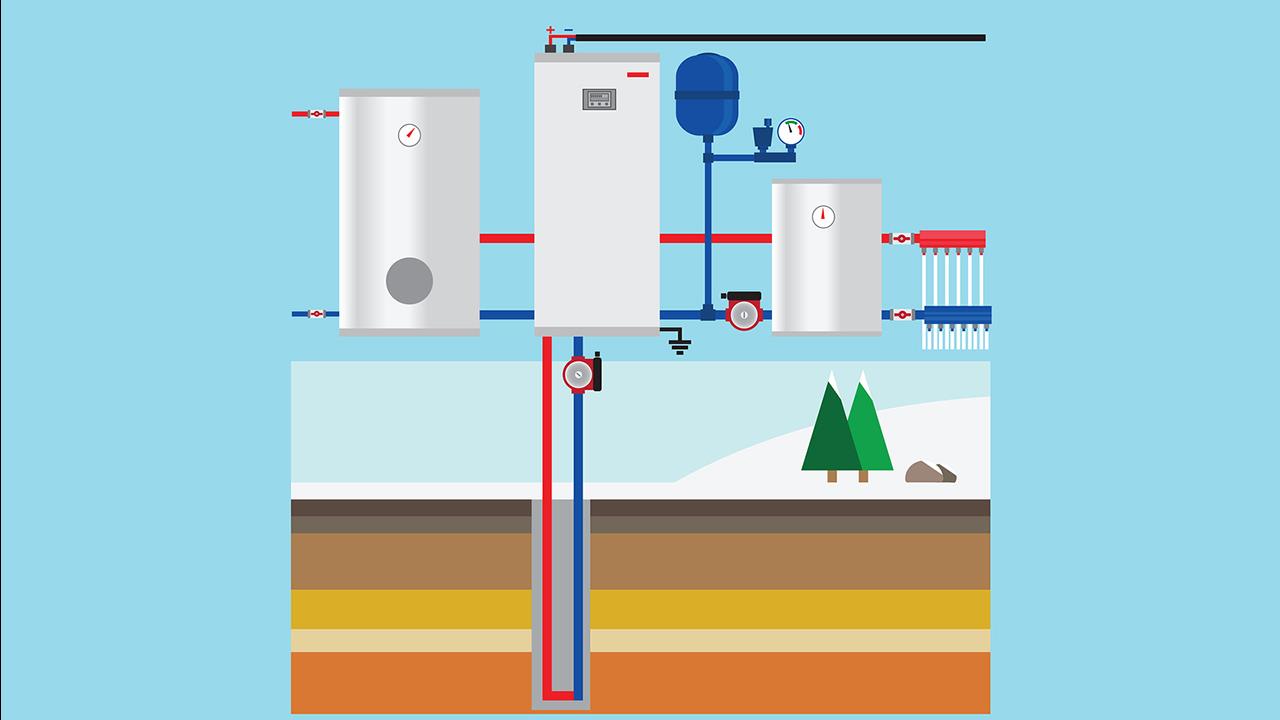

David Holmes, founder at Boiler Guide, examines what solutions will likely spearhead the charge to net-zero carbon in 2050.
The UK’s objective is to achieve net-zero carbon emissions by 2050, but the route we will take is, as yet, uncertain.
The Committee on Climate Change (CCC) is currently gathering evidence and recommendations as to how we will eliminate carbon emissions or offset them, accepting contributions from individuals in business, industry, parliament, government, civil society, academia and the public. This opportunity to contribute will come to a close on 5 February 2020, and the CCC will then advise the government based on its research. In September 2020, the government will publish the 'Carbon Budget' which will outline how we will decarbonise our society, the predicted costs and the requirements of industry.
This will be the 6th carbon budget published since it was made a legal requirement under the 2008 Climate Change Act. To date, these budgets have covered aims and targets up to 2032; this will be the first to try and set a clear path to net-zero by 2050. A significant part of this plan is expected to include how we will heat our homes in the future without relying on fossil fuels.
The question of home heating
The heating industry is responsible for around a third of all UK carbon emissions with the business and transport also contributing significant emissions. We need to find alternative heating solutions which use renewable sources of energy and don’t emit carbon, which means big changes are coming to the industry, installers and the public.
Broadly speaking, there are three parts to the question of how we will heat our homes in the future.
Existing homes on the gas grid
At the moment over 80% of the UK’s homes are connected to the national grid which supplies their boiler with natural gas. Rather than switch all of these homes to a completely different renewable heating system which would be costly and labour intensive, the industry is taking steps towards phasing in hydrogen.
Unlike natural gas, when hydrogen is burnt it does not release carbon into the atmosphere. Trials are currently taking place to test the viability of adding hydrogen into the gas network to at first reduce the amount of natural gas used and then - when we have a sufficient and reliable supply - to replace natural gas altogether. The trial is being run by HyDeploy in the village of Keele where the gas being supplied properties is made up of 20% hydrogen and 80% natural gas. More trials are expected to begin in 2020.
In addition to these trials, boiler manufacturers are also showing support for the concept of a hydrogen network. Both Worcester Bosch and Baxi have now revealed prototypes of ‘hydrogen ready’ boilers which, theoretically, could be installed across the country from 2025. These boilers run on natural gas but if and when a hydrogen network is ready, could make the switch to 100% hydrogen without the need for external work.
However, the big issue facing the industry is that to make a hydrogen gas network a viable solution, we need to develop a hydrogen production method which does not produce carbon emissions.
Newbuilds on the grid
The government has already committed to banning natural gas boiler installations from new build homes from 2025. The most likely alternative at this stage appears to be low carbon, electric heating, such as air source and ground source heat pumps. Heat pumps use a small amount of electricity to extract latent heat from either the air or ground outside the home.
The key to making these systems effective, however, will be ensuring that newbuild homes are highly insulated, which unfortunately is not currently always the case.
Off-grid homes
The plan for off-grid homes, which often rely on oil boilers or electric heating rather than gas, is the most uncertain. The Clean Growth Plan states: “Our ambition is to phase out the installation of high carbon fossil fuel heating in new and existing off-gas grid residential buildings (which are mostly in rural areas) during the 2020s.”
Potential heating alternatives could include heat pumps, biomass boilers, and/or solar thermal panels, but these are all unfamiliar technologies which require a high upfront cost. Homes also need to have high levels of insulation which is a particular issue for older housing stock.
The future of home heating
The most likely path for heating systems of the future appears to be a phased move to a hydrogen network and the rollout of electric heating such as heat pumps where insulation levels are sufficient.
Are we likely to see significant practical changes in the way we live over the next decade? For the most part, probably not, but the next few years will be crucial in terms of the government deciding on what will change and when.
While practical change may not be imminent, government plans need to be in place as soon as possible to enable the industry to take action, installers to gain the skills required to install renewable technology, for the public to understand the new technology they will soon be living with, and, ultimately, to give us a chance of reaching the net-zero target by 2050.
If you'd like to keep up-to-date with the latest developments in the heating and plumbing industry, why not subscribe to our weekly newsletters? Just click the button below and you can ensure all the latest industry news and new product information lands in your inbox every week.